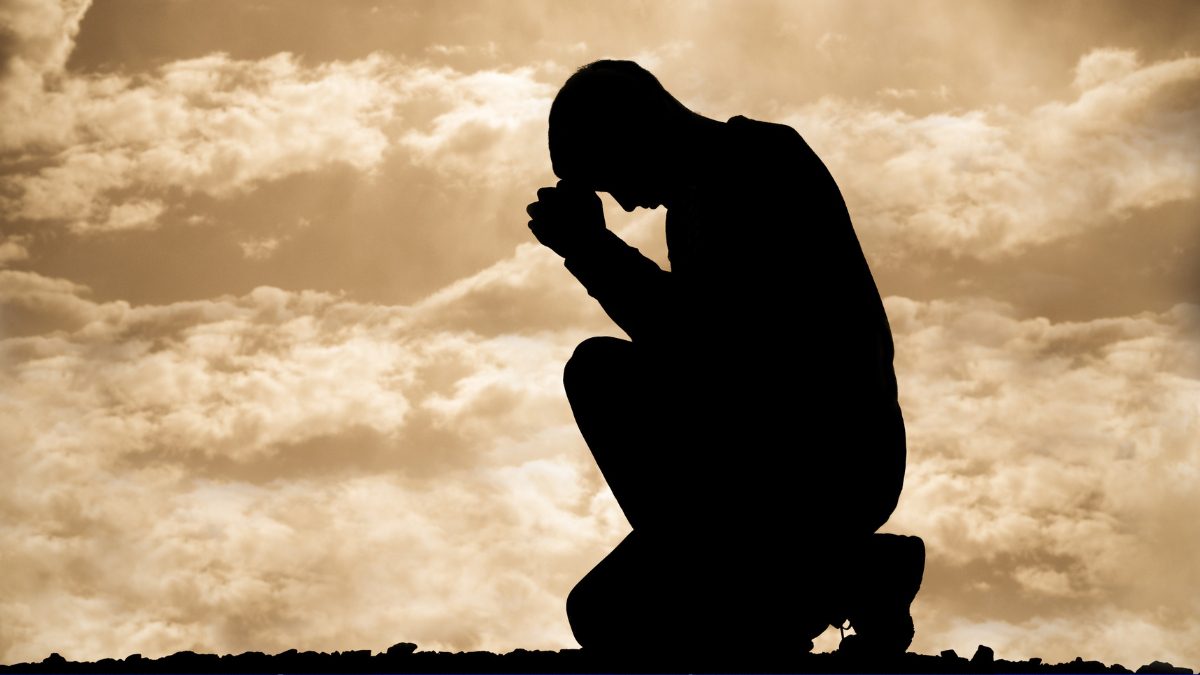In moments of joy, delight, and wonder, humans pray. In great need, in adulation, in fear and trembling, humans pray. To Allah, Jesus, Buddha, Vishnu, to our ancestors, to God—and to gods—humans pray. We pray even if we don’t know what—or if—we believe.
For as long as humans have a history, we see signs of prayer. The human impulse to pray is reflected across millennia of art and culture. In contemporary times, movies and books are rife with characters casting themselves on a higher power. Beyond the ubiquitous scenes of dinner-table grace, we can find examples as varied as Jean Valjean’s heartfelt plea for another man’s safety in Les Miserables to the hollow prayers of the whiskey priest in Graham Greene’s The Power and the Glory.
The majority of these depictions show prayer as an individual endeavor, a private communion between a character and the divine. Rarely do we see characters joining with a friend or spouse to pray. Yet prayer is inherently communal. Those who pray often pray for others, interceding on behalf of loved ones. Major religious traditions also see prayer as a discipline done in the company of all believers, past and present, dead and alive. In this sense, even when people pray alone physically, they are praying in the presence of others (what’s known in Christianity as the “communion of saints”). Ancient and contemporary Hindu prayers focus on the whole continuum of relational concerns, from restoring lost love to finding a mate to avoiding divorce.
This communal understanding is also reflected in the way some social scientists understand prayer. They categorize the spiritual practice in three distinct movements. First, our communication with the divine moves us upward out of a desire to connect with something greater than ourselves. Second, prayer moves us inward, toward self-examination and an experience of communion. Finally, prayer moves us outward, driving us to connect with others and the material experiences of life.
Monologue or dialogue: Does prayer change anything?
This third movement—outward—is of particular interest to researchers who study the effects of prayer on relationships. It goes without saying that it’s tricky to empirically study prayer, and even more so to identify prayer’s results. The psychology of prayer is complex because it moves beyond what is known into mystery, and an encounter with the ineffable. The premise of prayer, after all, is communion between human and divine. This presents a challenge for scientists when only one of two participants is accessible for study.
Beyond that, prayer is not a purely utilitarian activity. For practitioners of the discipline, the act of praying is not restricted to an active pursuit of goals. Many who practice a faith pray not for a response from some cosmic vending machine, but rather to connect with a higher power, experience awe, and transcend the frenetic worries of everyday life. In this sense, prayer is less a specific event than it is a manner of living. Yet despite these challenges, researchers have found evidence that prayer gets results—at least when it comes to close relationships.
In “The Science of Prayer: Opportunities and Limits,” psychologist Kevin L. Ladd compiles research about the effects of prayer on intimate relationships. A Pew study on the frequency of prayer found that 60 percent of married adults pray, across religious affiliation and even outside organized religion. Could this inclination toward prayer improve their marriages? The findings included in Ladd’s paper suggests that it can.
One conclusion Ladd presents is that engaging in prayer influences which goals we decide are worthy of our attention. Once we choose specific goals, our willingness to engage in the behaviors necessary to achieve these goals increases. When the goals include positive relational changes—taking on a more cooperative attitude or improving listening skills—satisfaction in love follows close behind.
The moral of the story is that prayer changes us, often for the better. This in turn impacts our intimate relationships. In other words, prayer may not move a rock, but it often inspires people to move rocks. It’s a twist on the often-quoted Gandhi aphorism: Be the change you want to see in your relationship. A partner whose prayer habits redirect her goals is likely to modify—and usually improve—her behavior to reach those goals.
Greater capacity to forgive
Psychologist Frank Fincham studies conflict, forgiveness, and prayer in the context of close relationships. Fincham and his research team have spent roughly two decades exploring the links between spiritual practice and relationships. Their findings show that prayer’s relational power is strongest when it comes to forgiveness.
In two studies, Fincham and his team explored how prayer impacted forgiveness between partners. The first revealed that those who prayed for the well-being of a romantic partner were more willing to forgive that partner compared to participants who simply thought about or described their partner. In the second study, participants were told to pray for a friend, pray about any topic, or think positive thoughts about a friend every day for four weeks. Participants who prayed for their friend reported greater forgiveness than the other two groups.
Other research has corroborated these findings, providing evidence that praying for one’s partner reduces vengefulness and increases cooperative behaviors (even after being hurt by a partner). Studies have also shown that praying for one’s partner enhances both cooperation and forgiveness in the one doing the praying. Whether or not prayer elicits a direct divine response—something we’ll never prove empirically—there’s strong evidence that prayer leads to concrete, measurable changes in people’s lives.
Praying prompts us to figure out how to move the metaphorical rock in our relationship. It can serve to re-orient goals and increase cooperation. While prayer remains a skittish subject of study, a growing body of evidence points to the concrete changes it can manifest in romantic and intimate relationships.
This article is from the Templeton Ideas archive. It was originally published in 2021.
